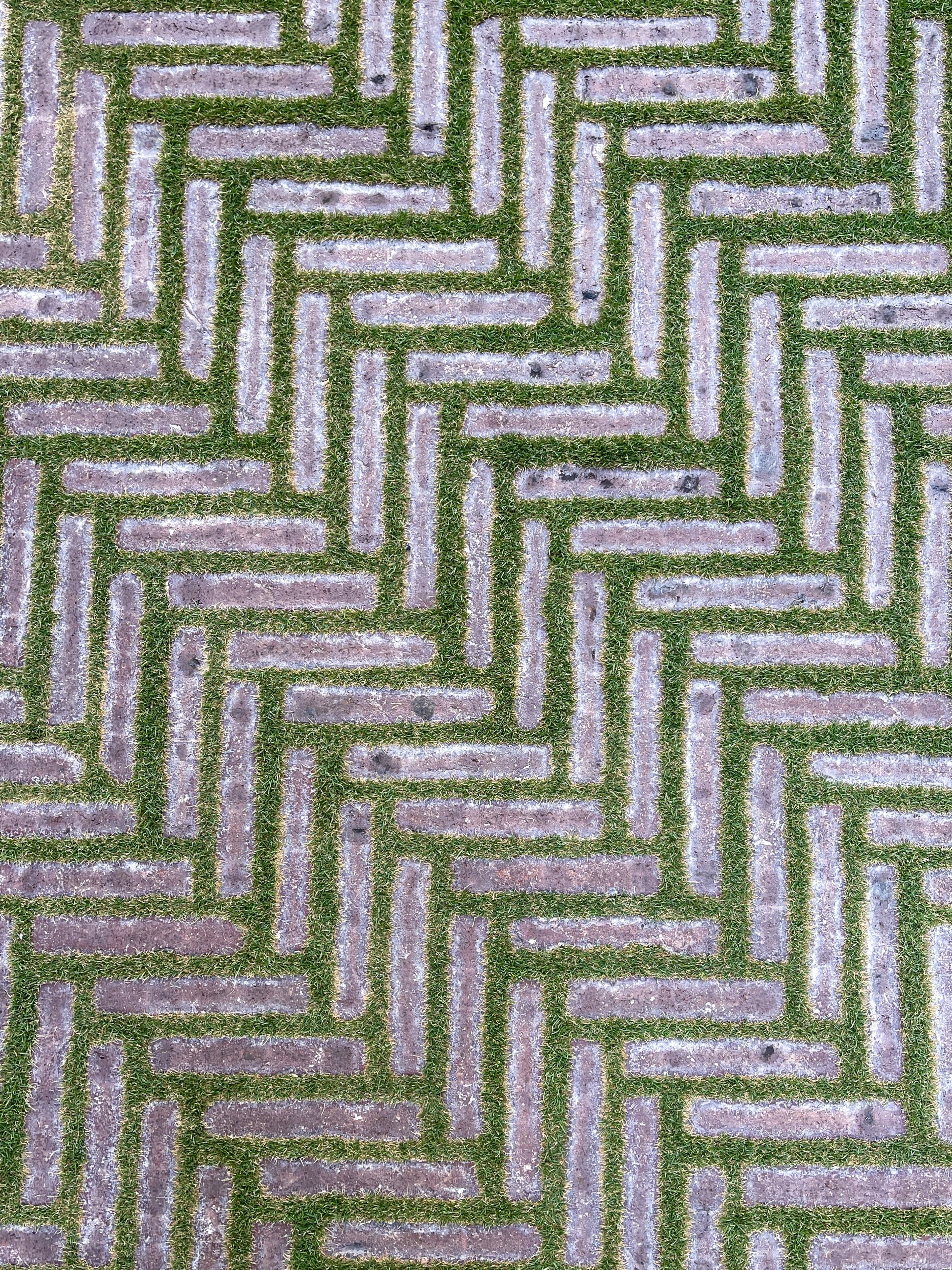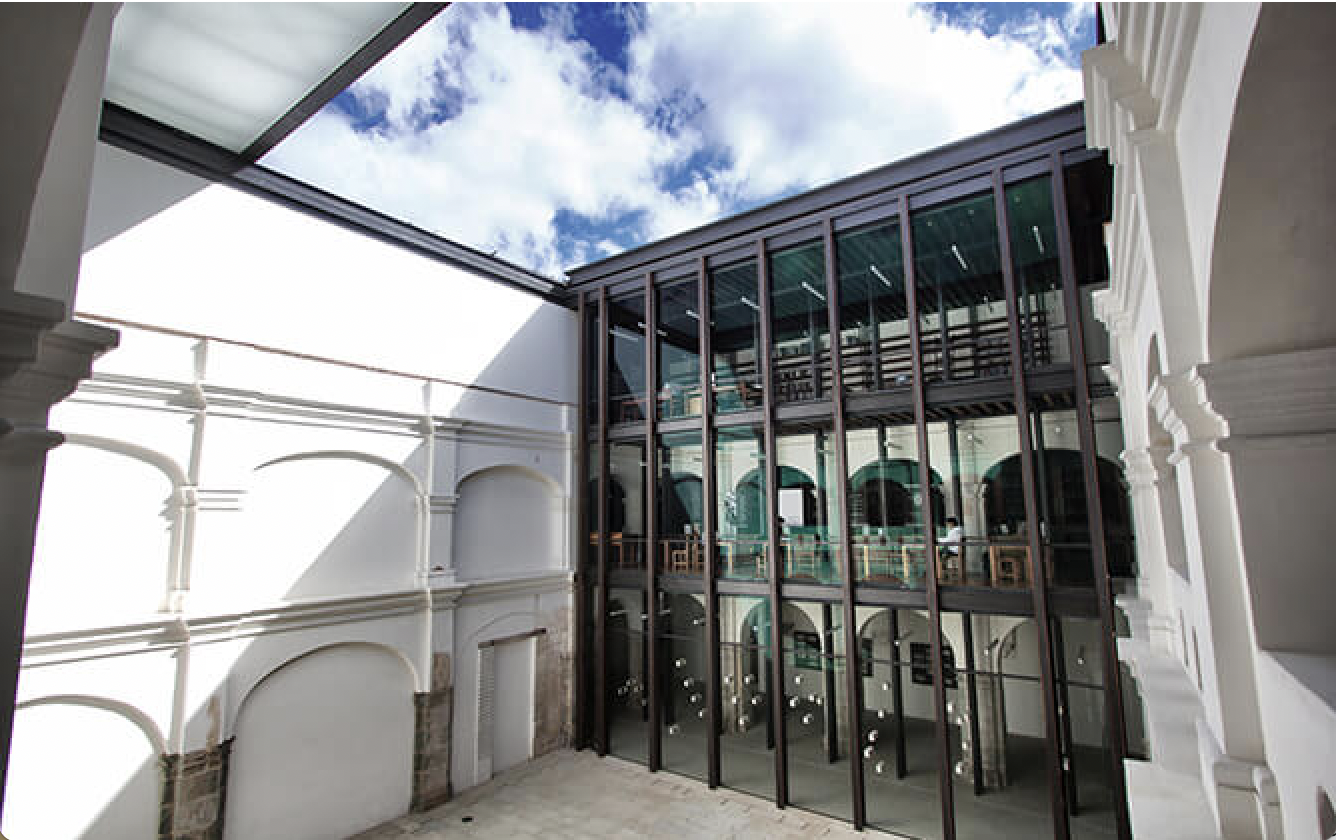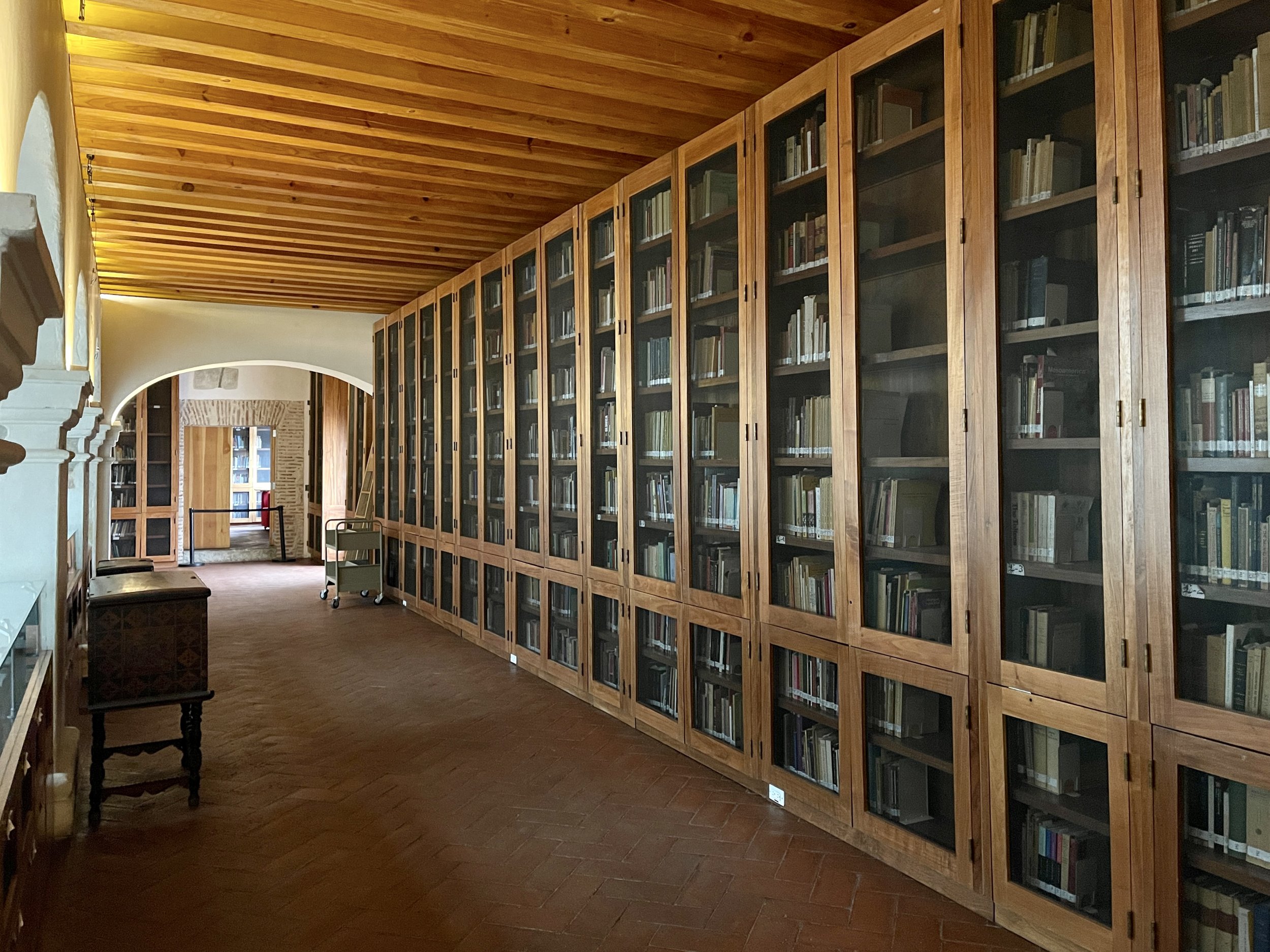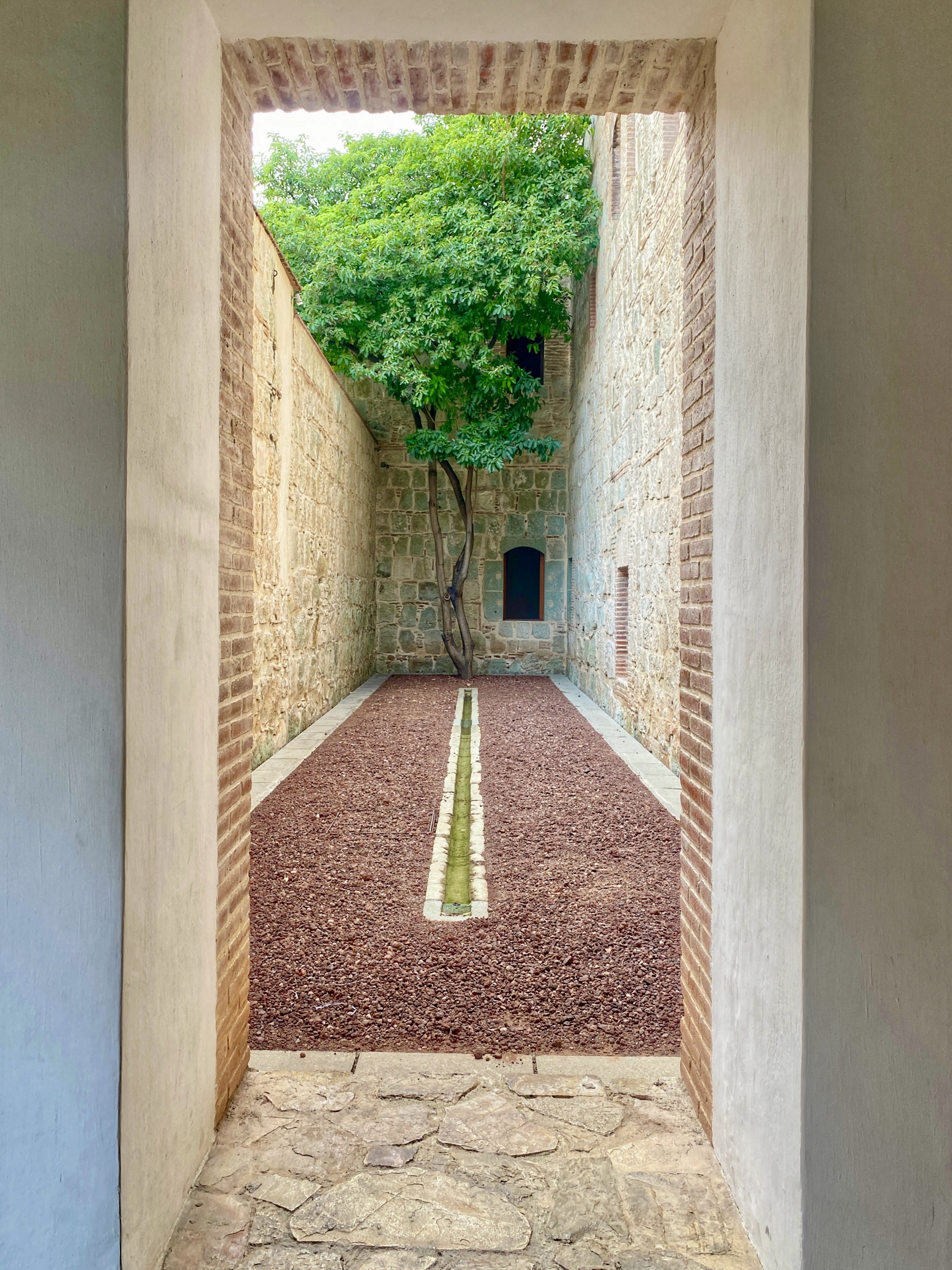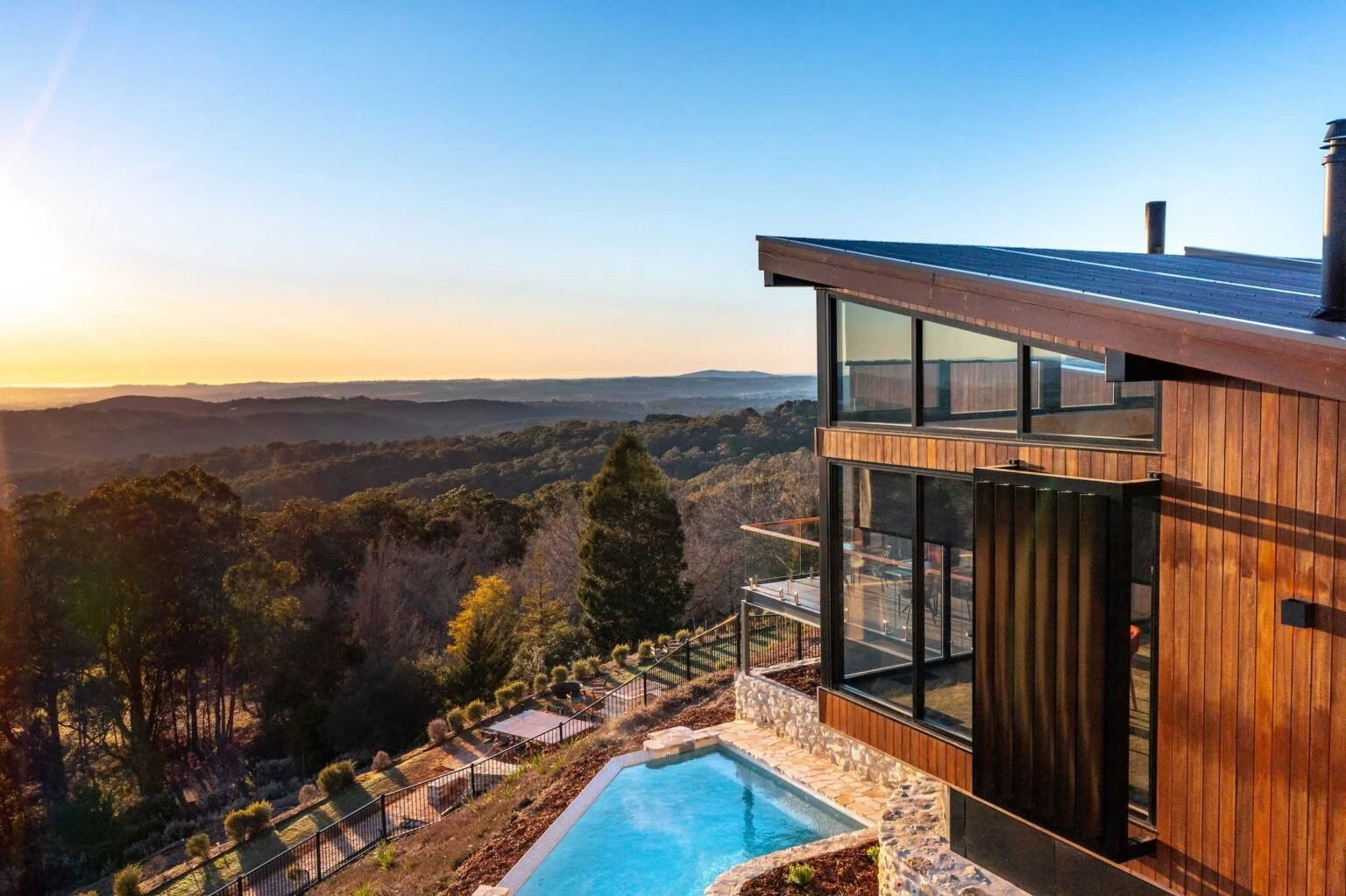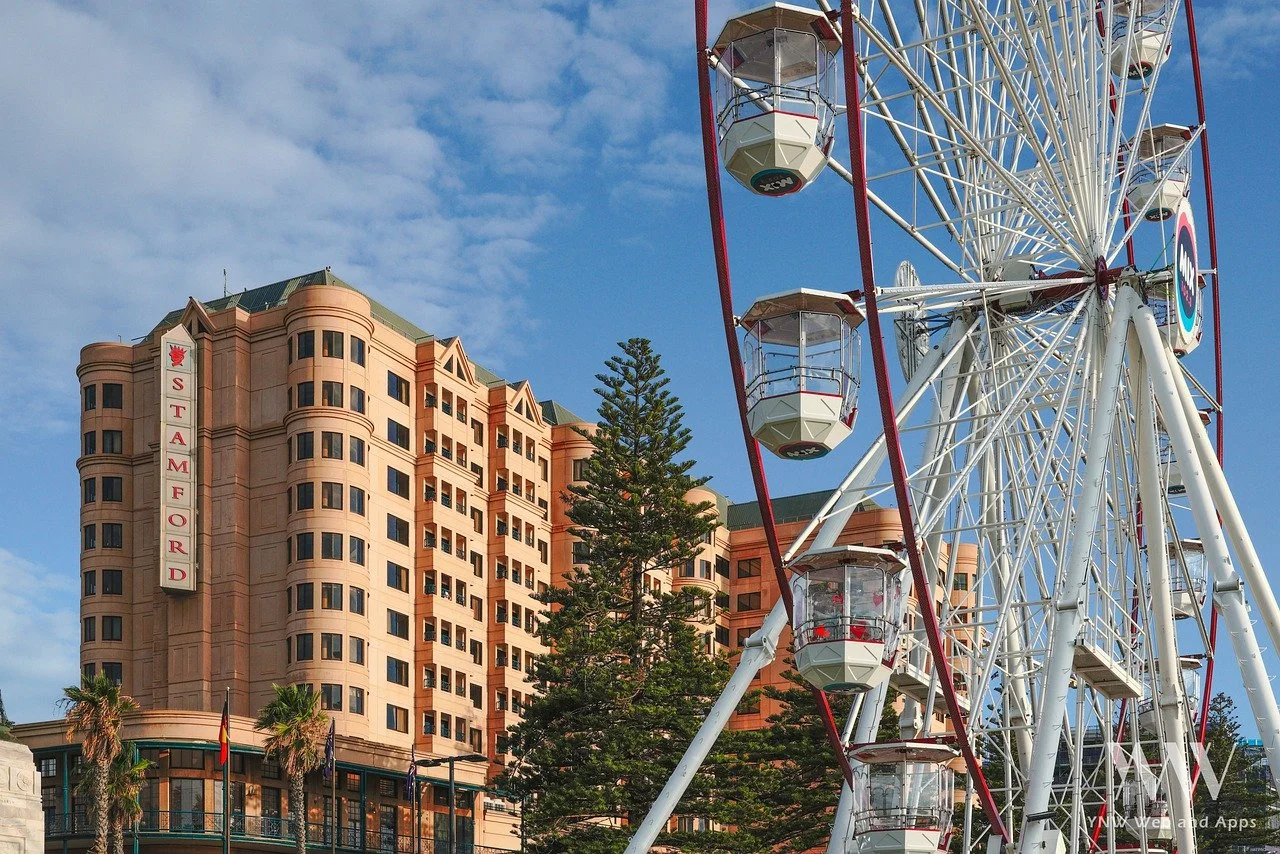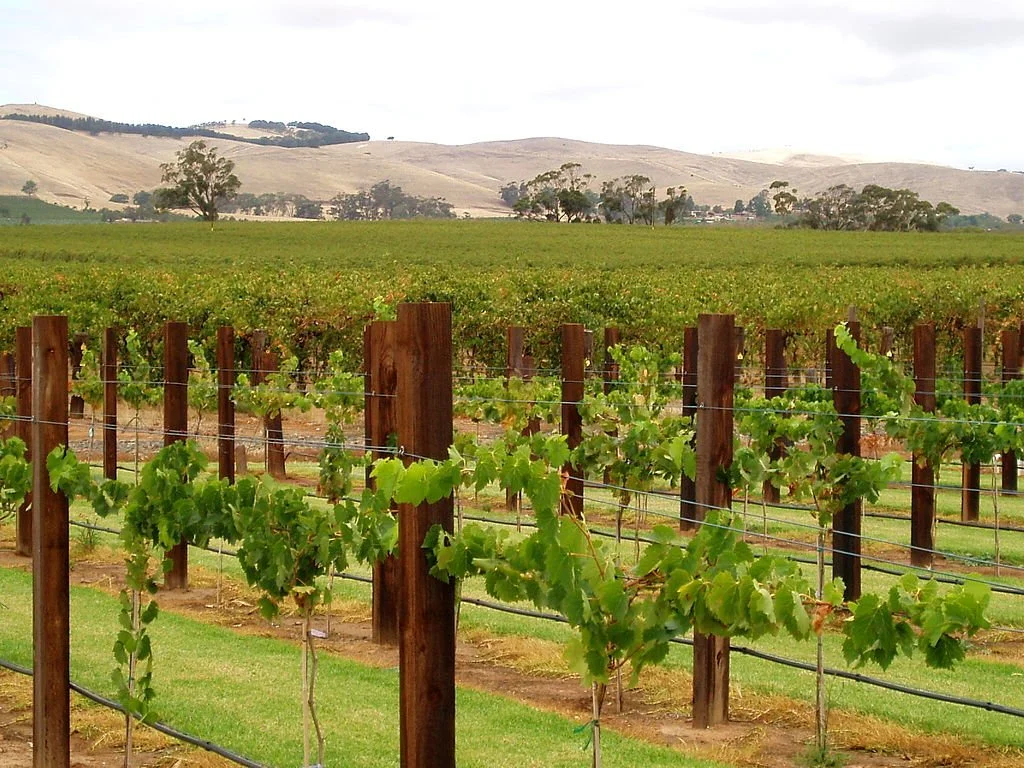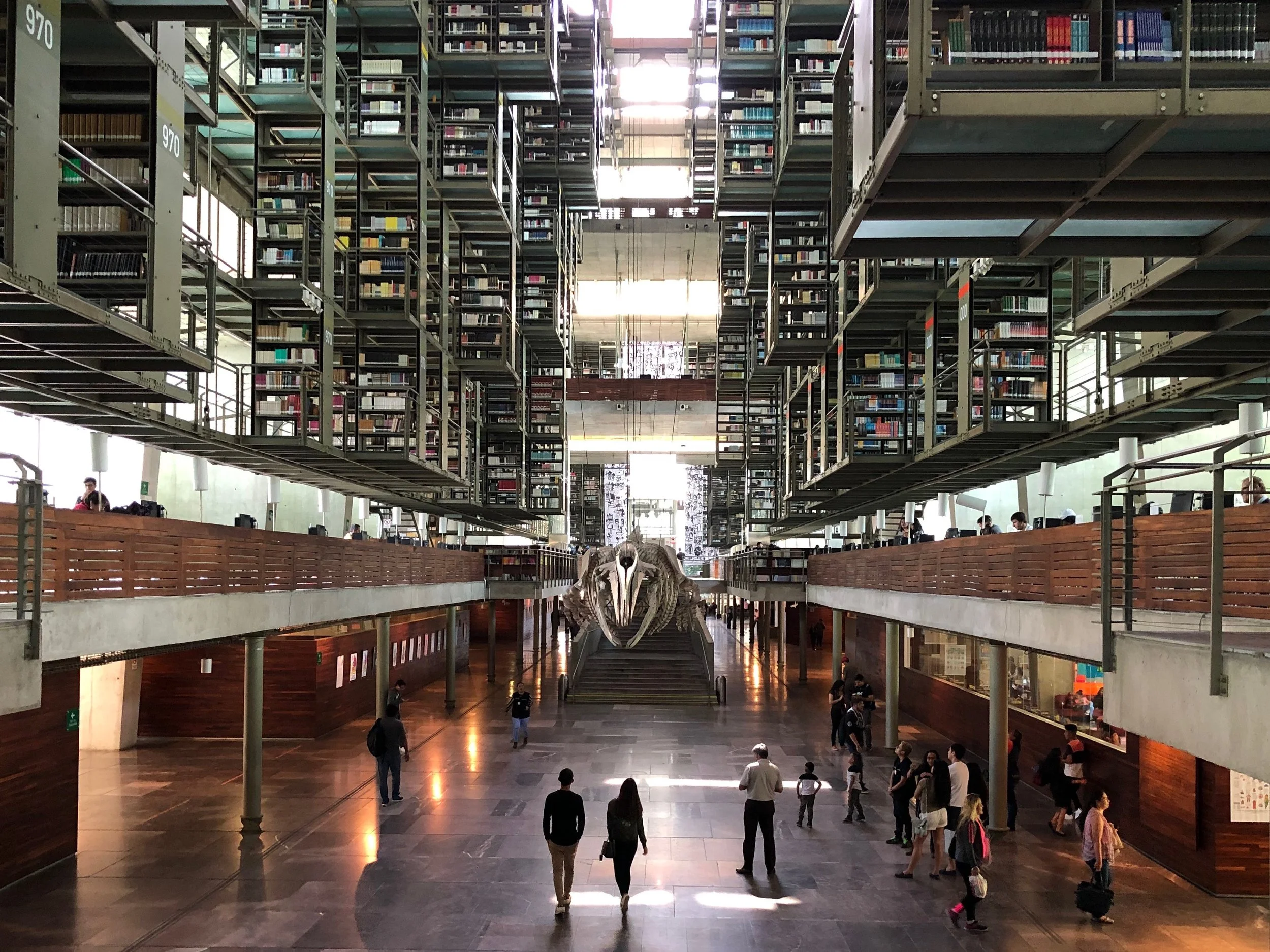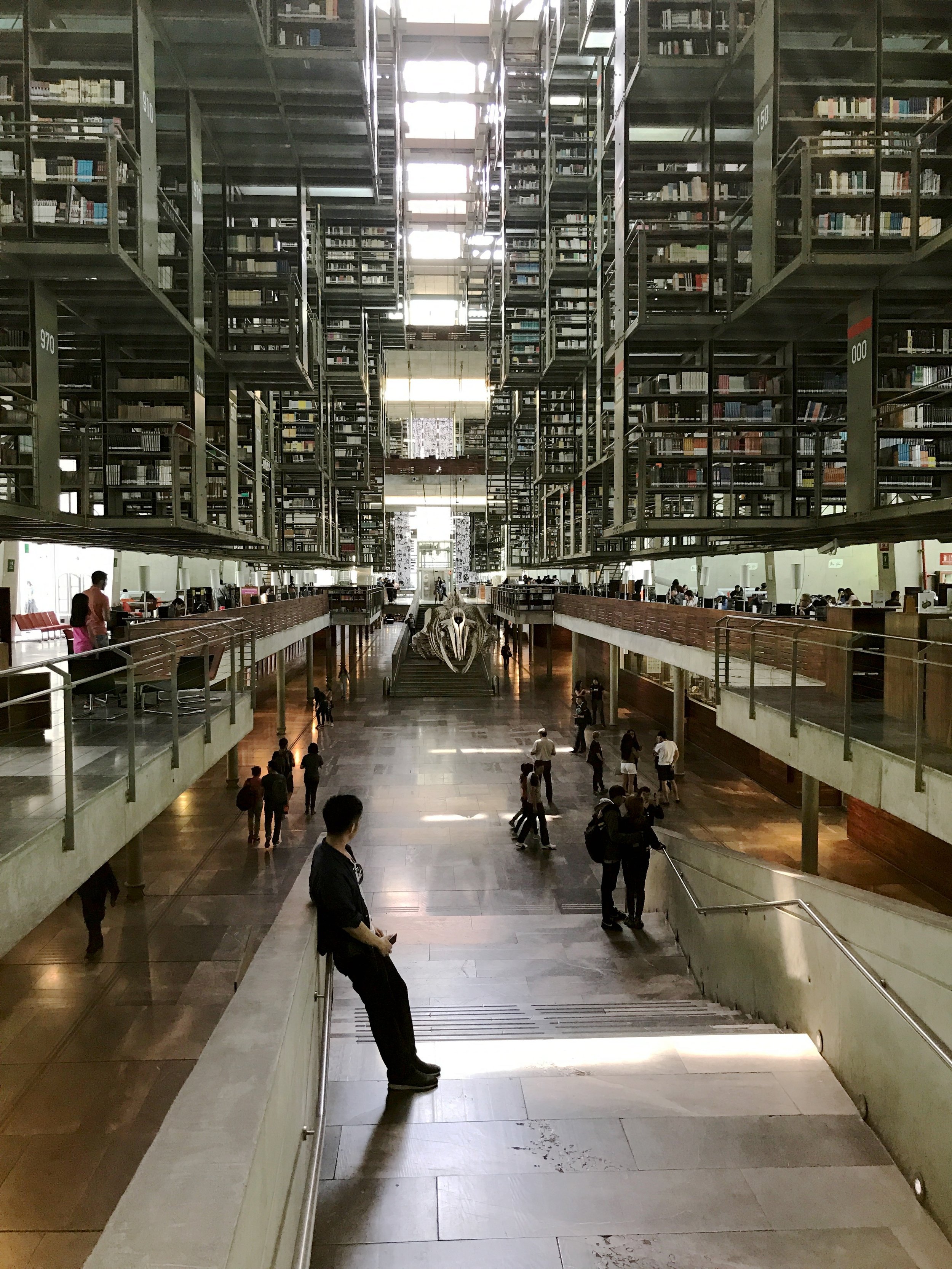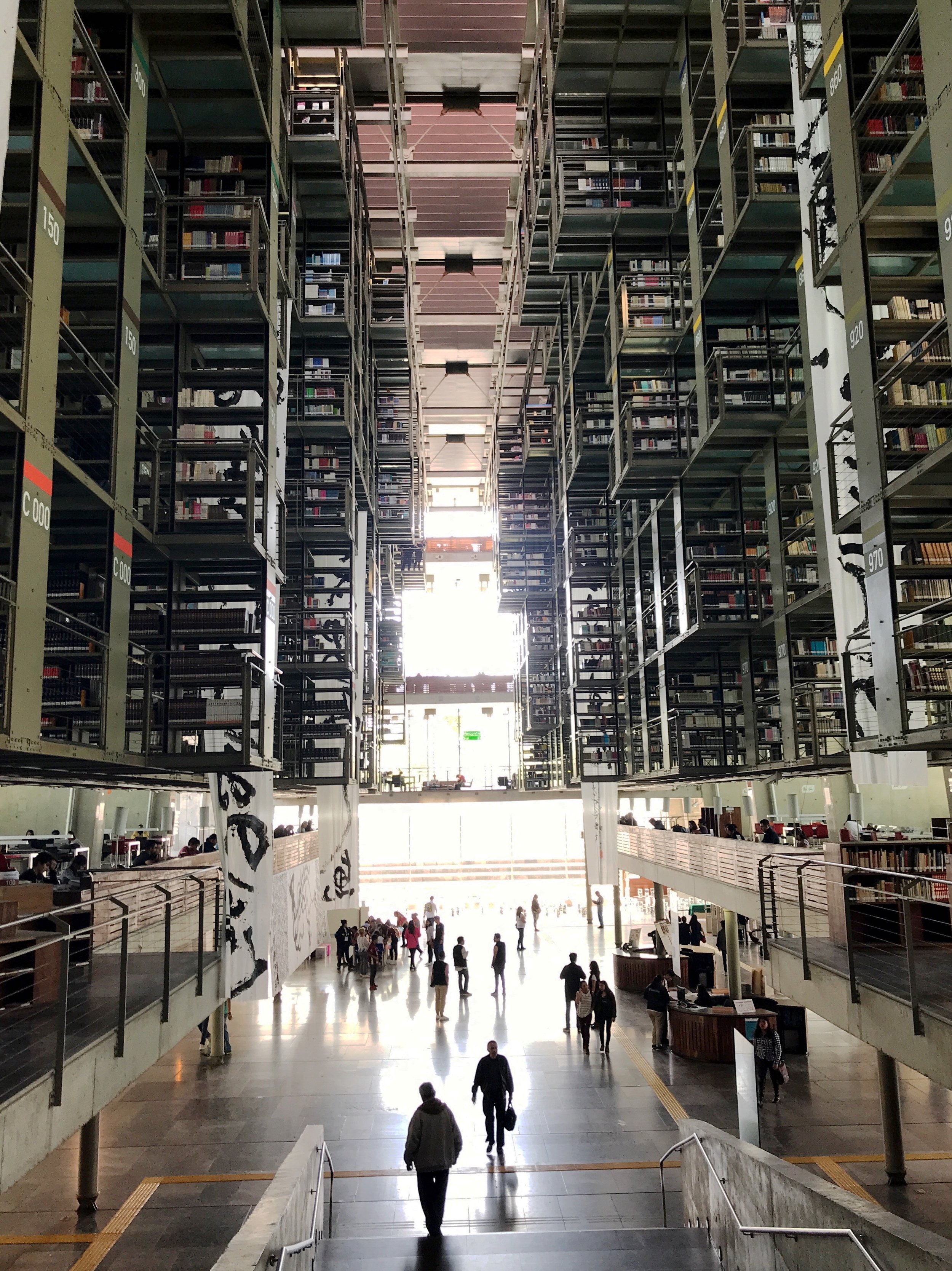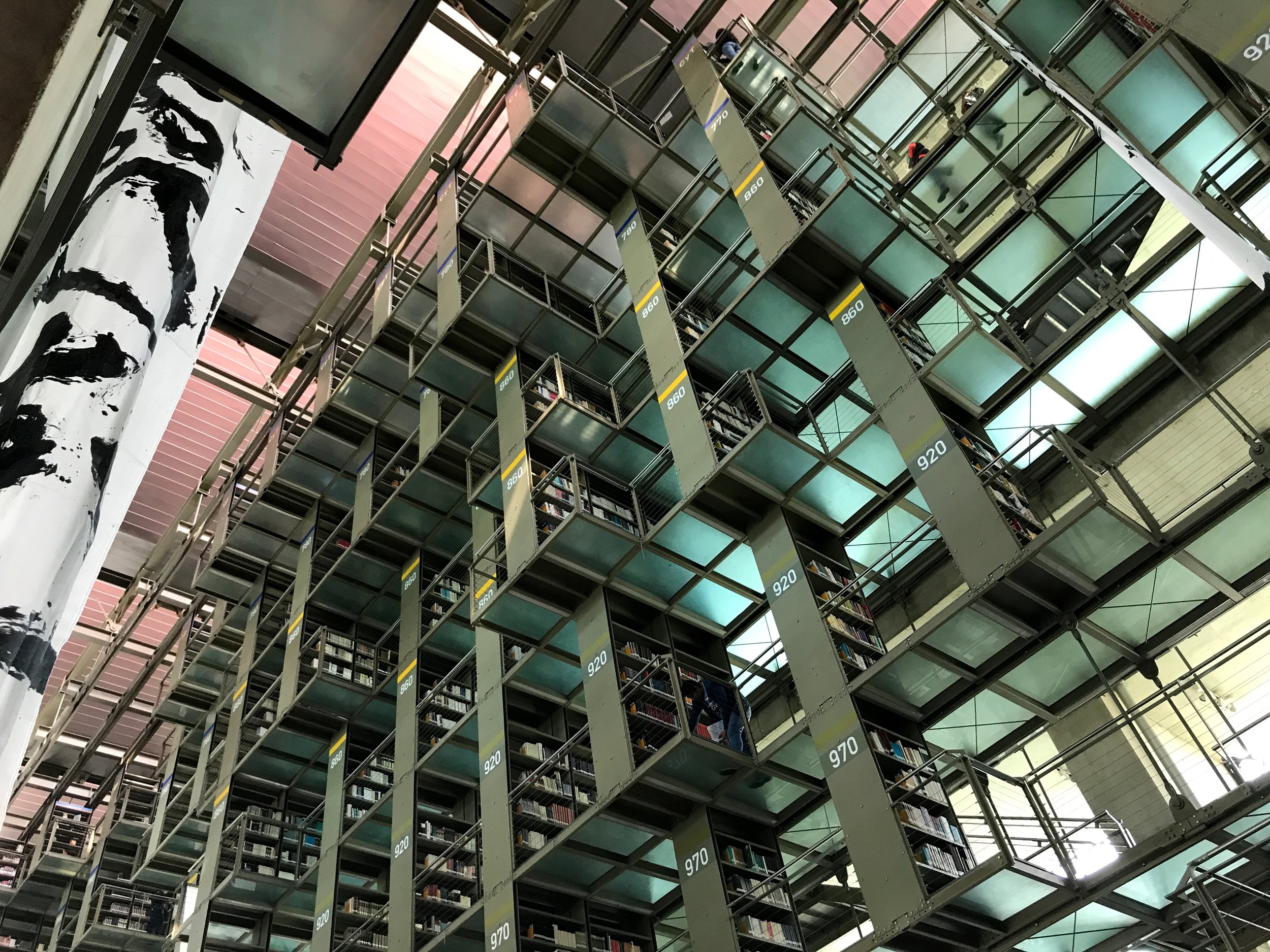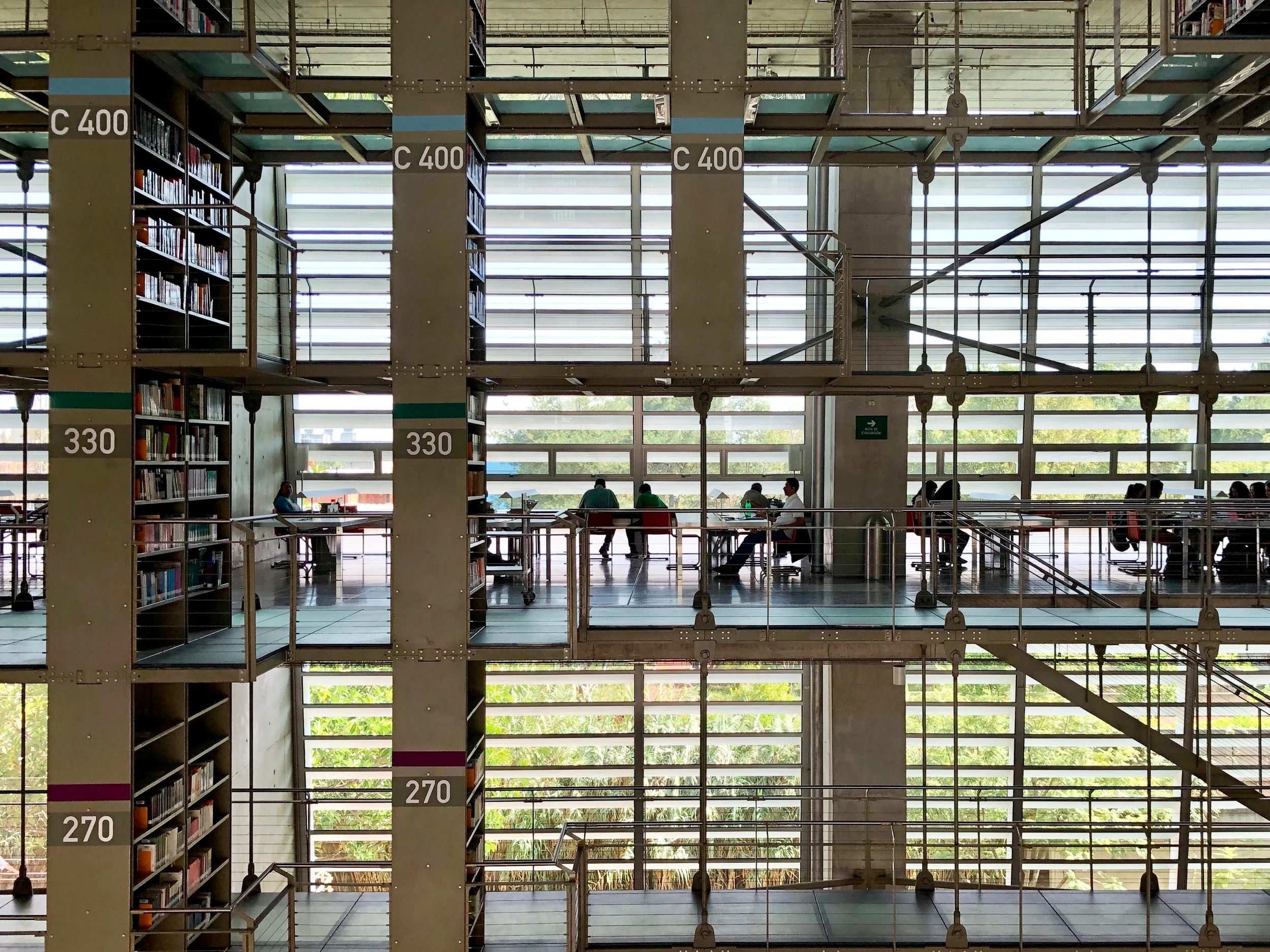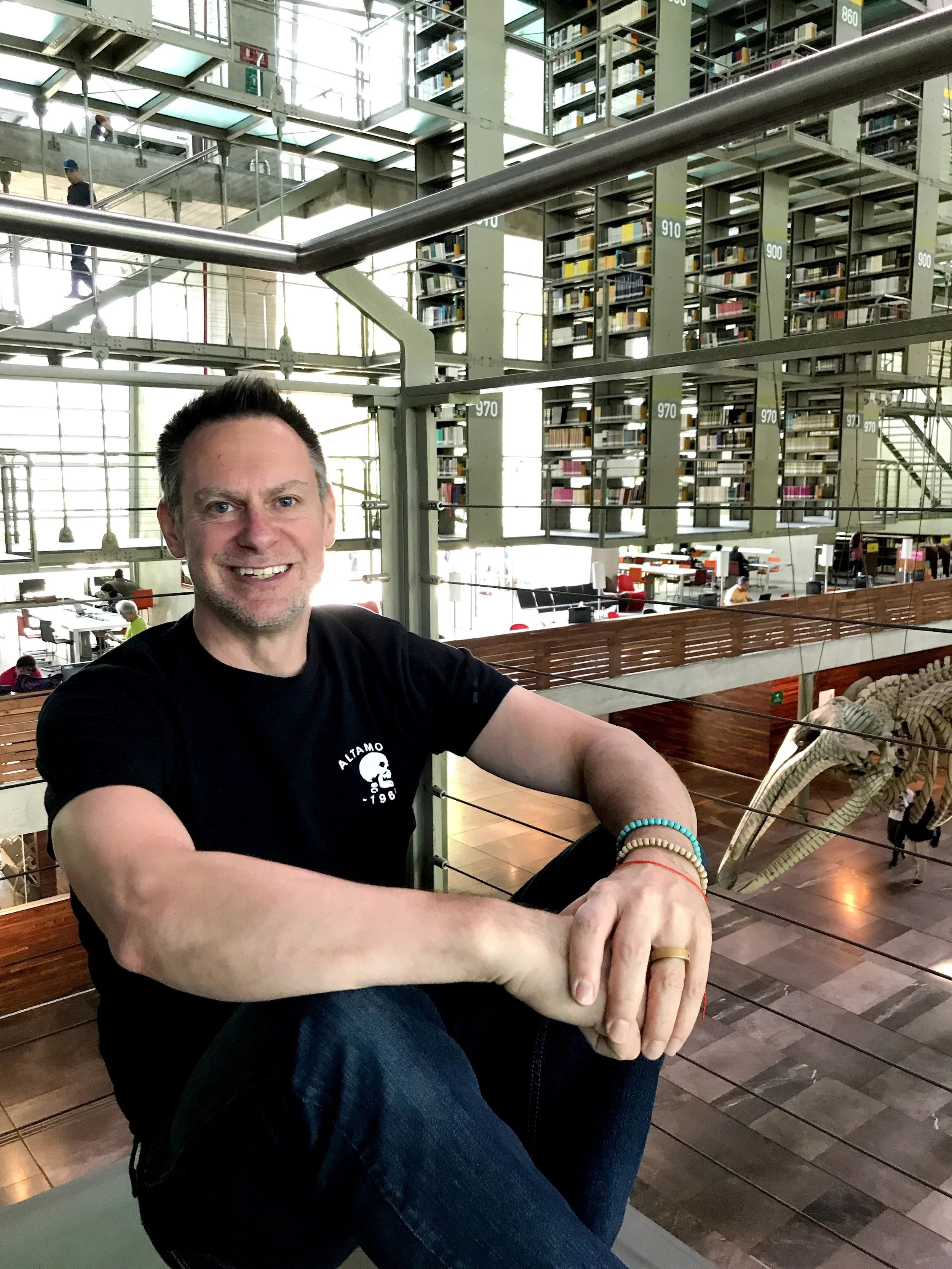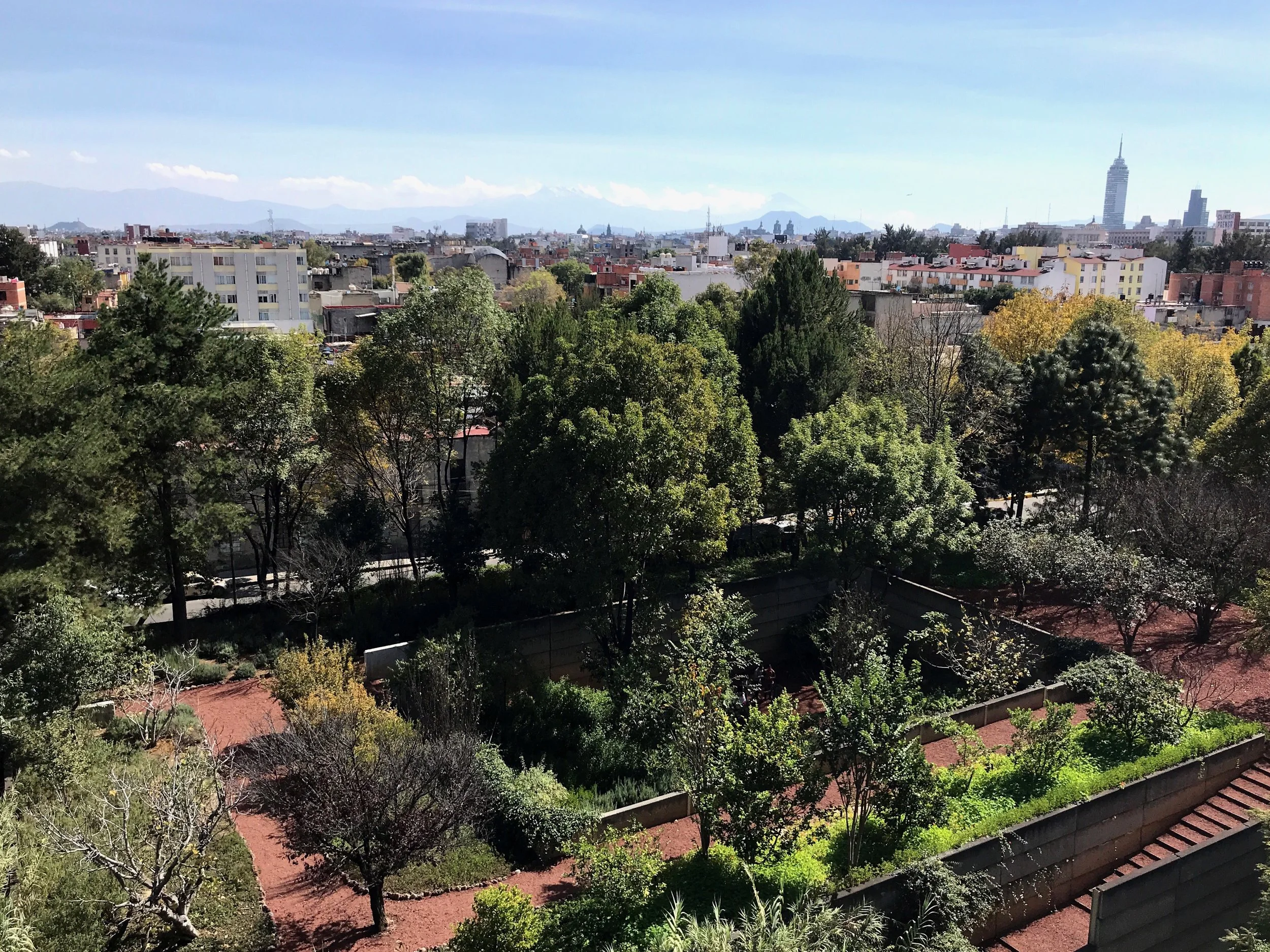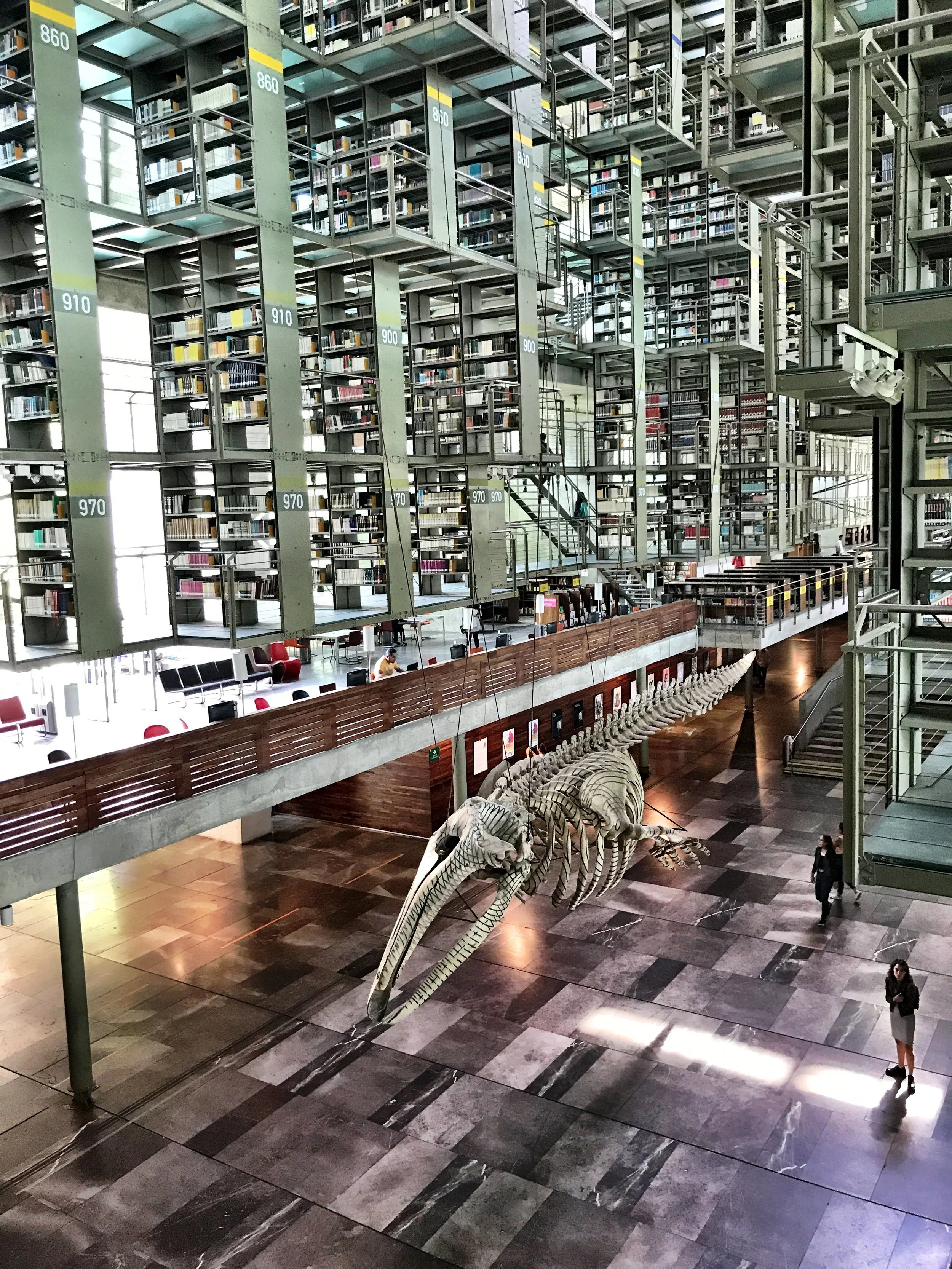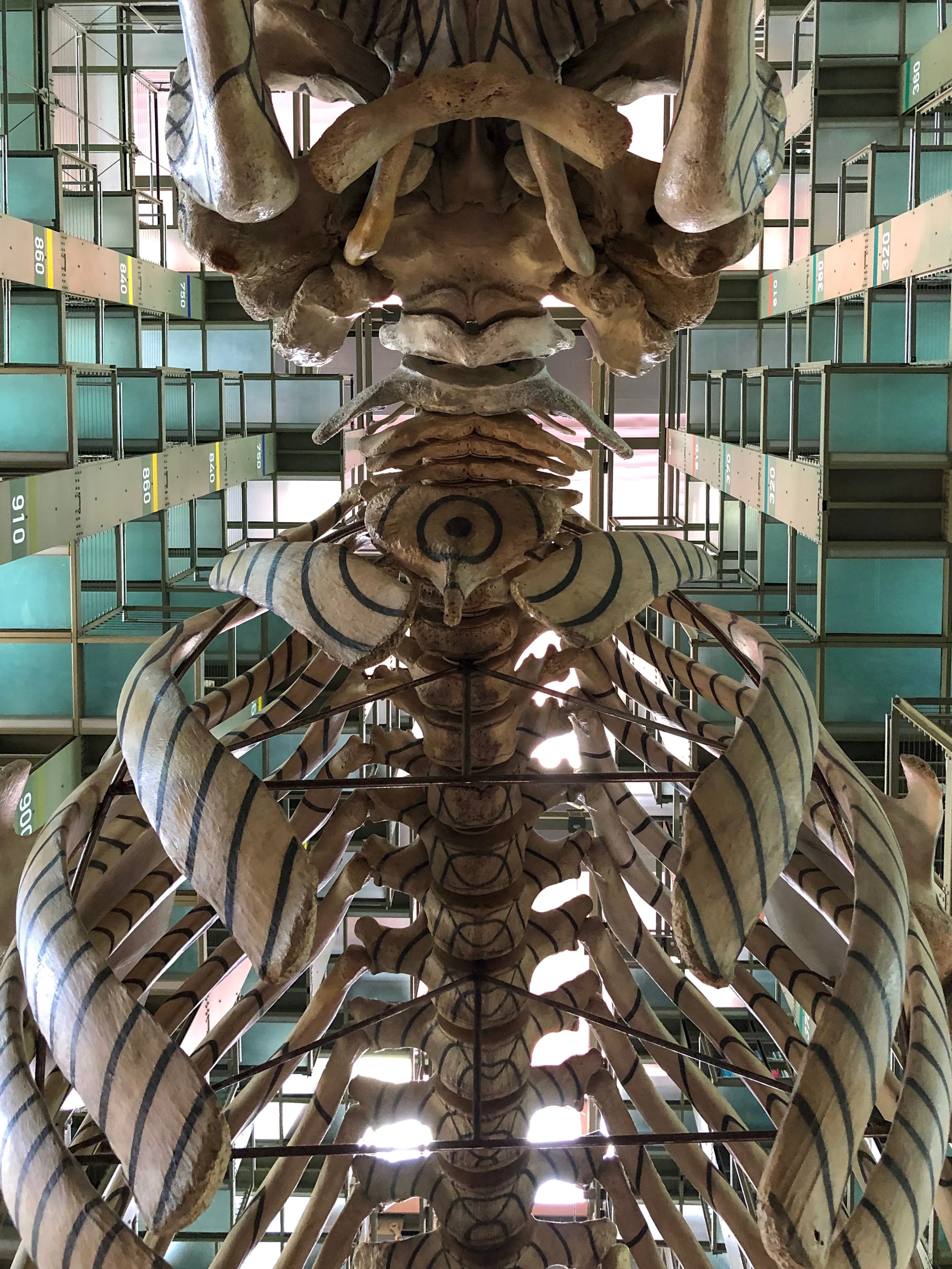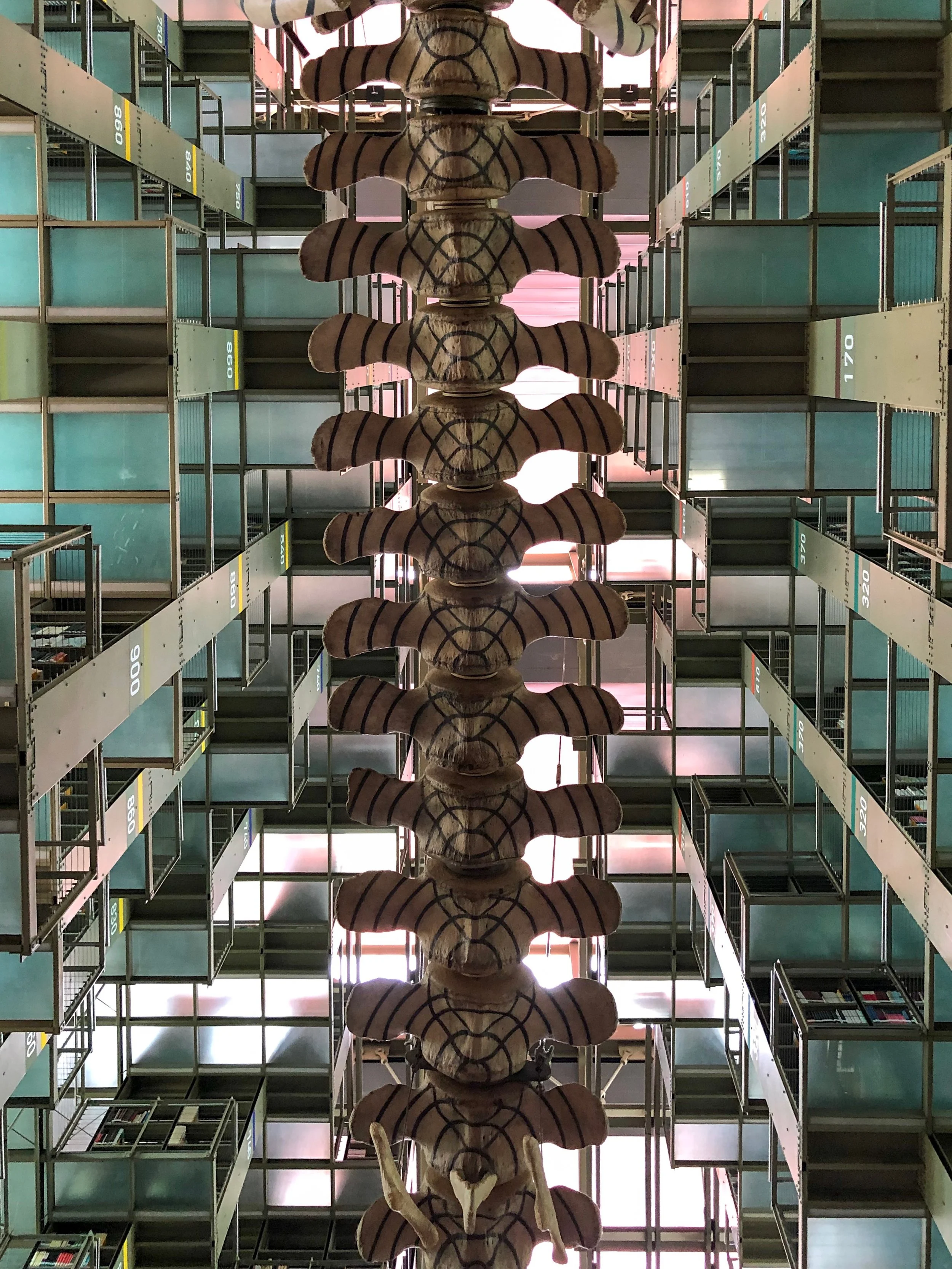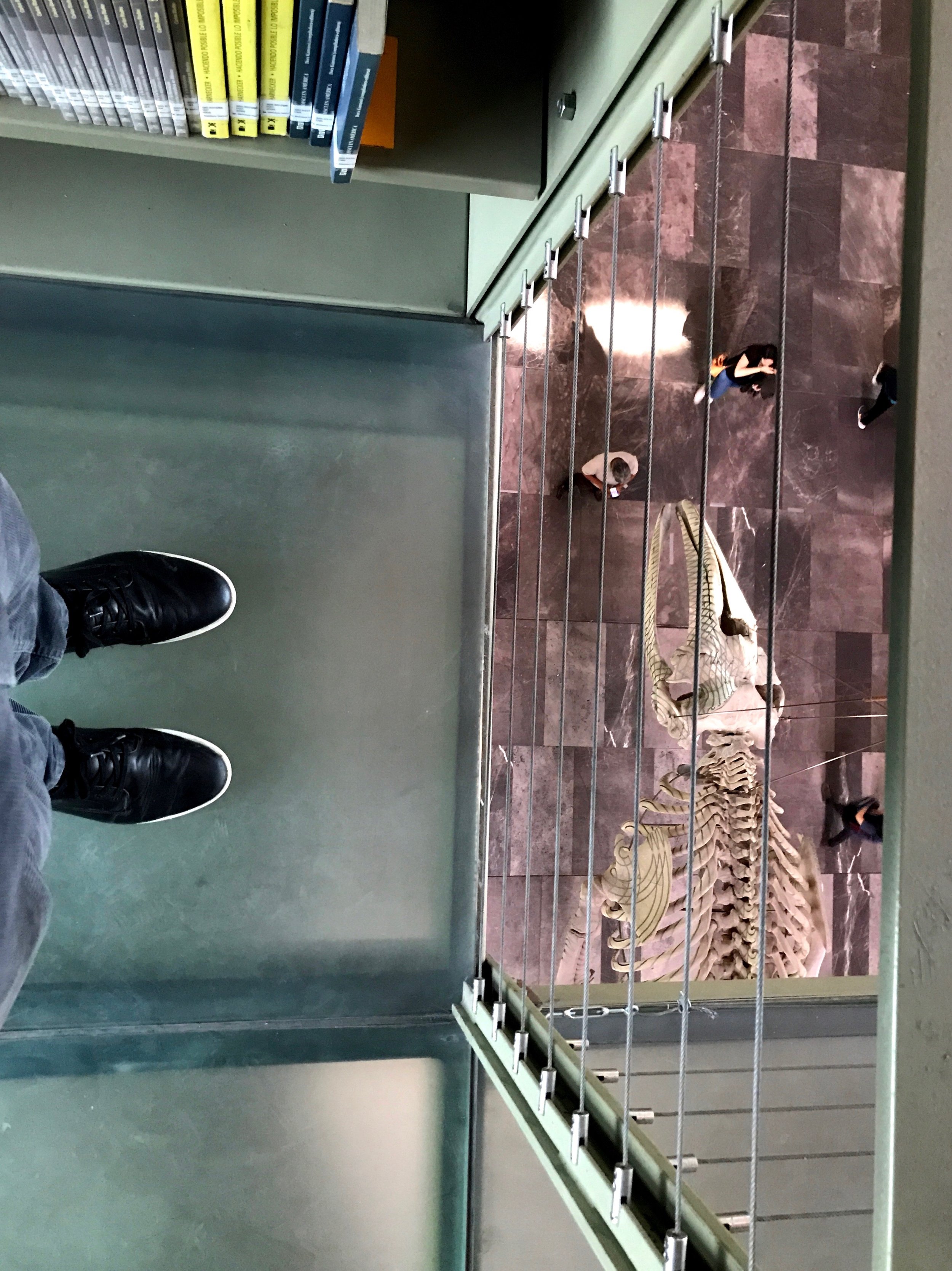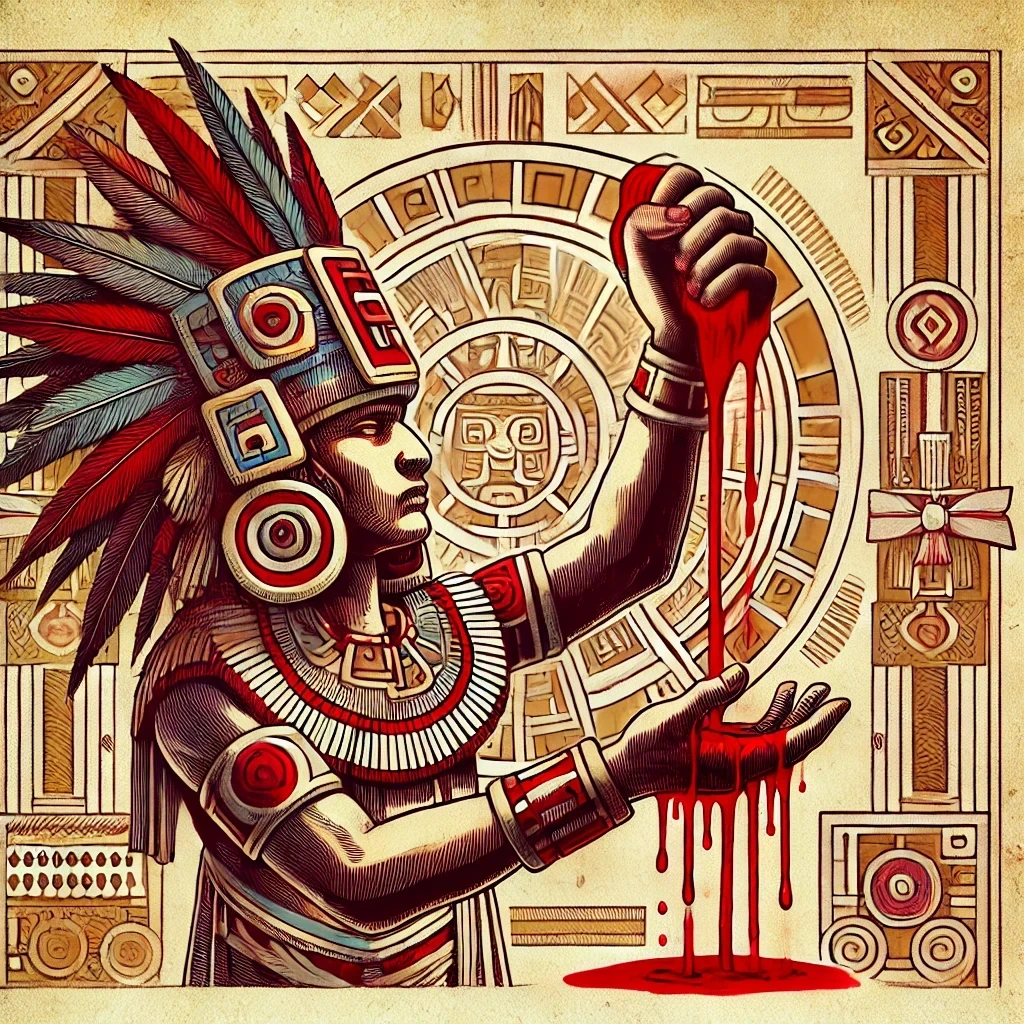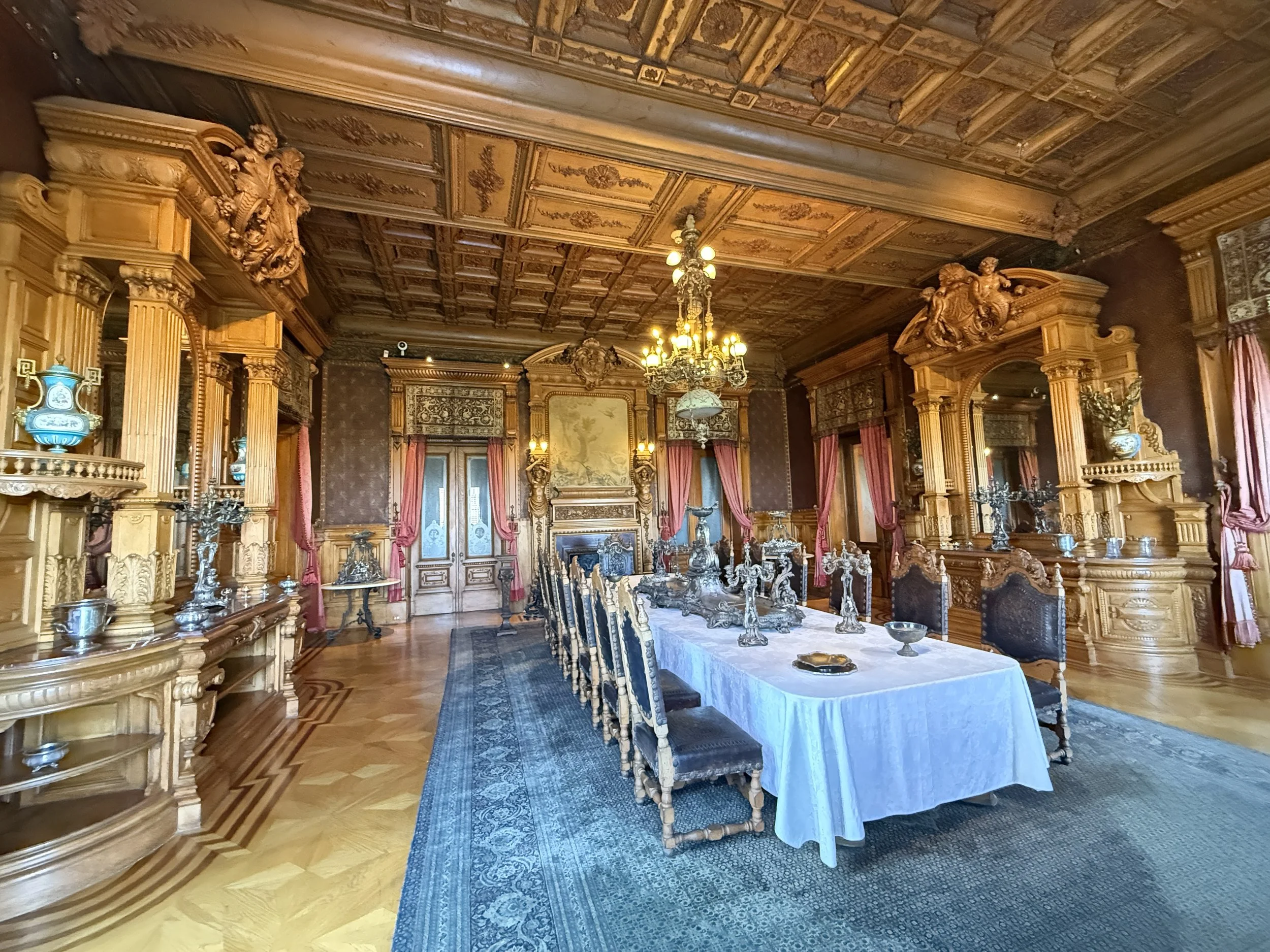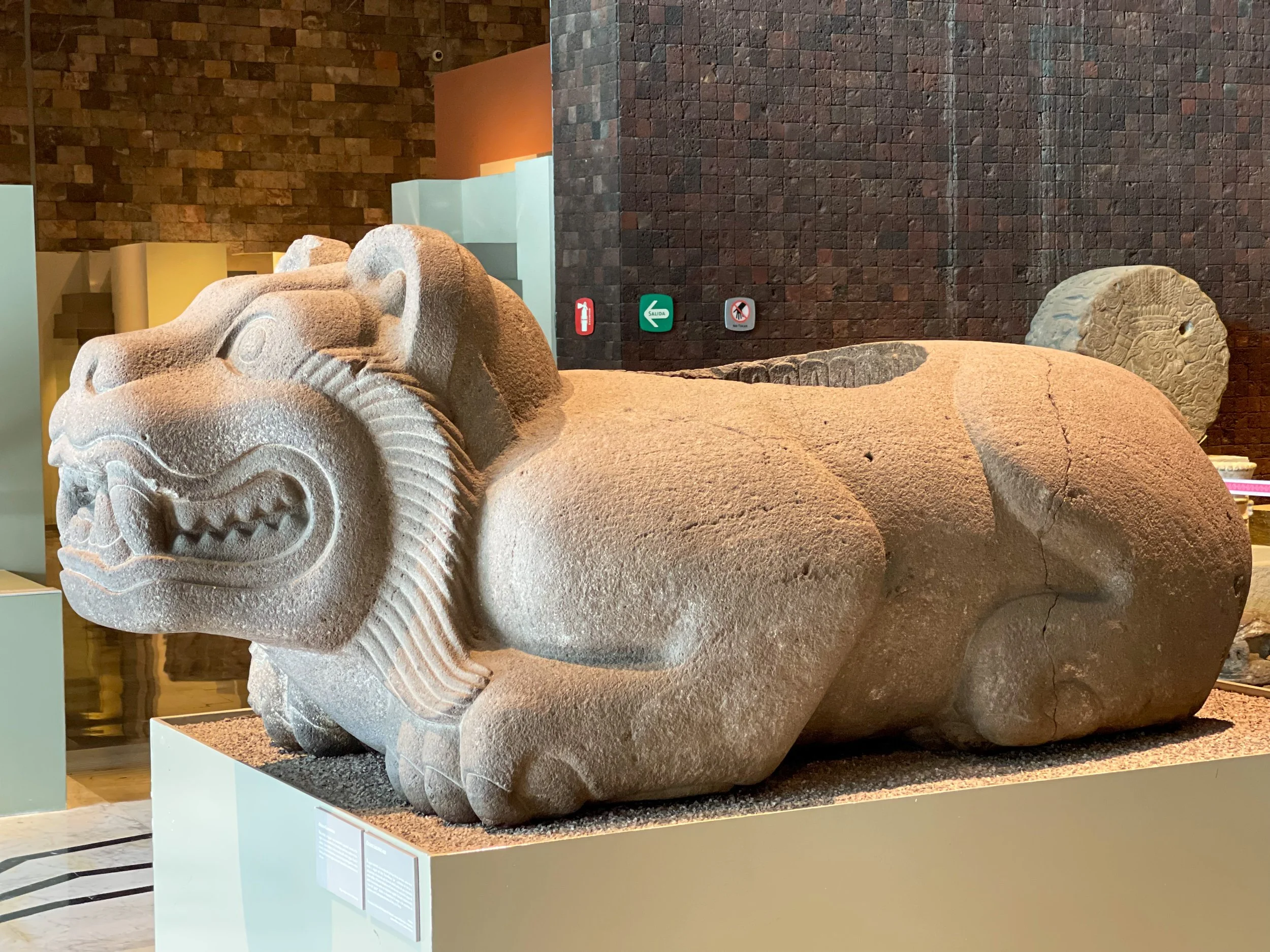An art-filled secret alley, award-winning design and a mission to preserve the indigenous heritage of the region, thanks in part to the Biblioteca de Investigación Juan de Córdova. Oaxaca’s cultural center is where culture and community come together.
The cool stonework in the passage leading to the cultural center
It opens up like a secret passage. At first we noticed the distinctive and charming herringbone pattern on the ground, chevrons of stone interspersed with grass.
We were drawn toward it, mesmerized. Then we looked up and around — and discovered a wonderland squeezed between two massive edifices. We had happened upon the art-filled alleyway that leads to the Centro Cultural San Pablo in the Mexican art-filled and mezcal-soaked town of Oaxaca.
The Alleyway Art Spaces at Centro Cultural San Pablo
Outside the Centro Cultural San Pablo, in the alleyway that leads to its entrance, there’s a gallery to the left if you enter off of Miguel Hidalgo, as well as a smaller exhibit space at the other end (which had a three-dimensional re-creation of Van Gogh’s painting Bedroom in Arles).
It’s not hard to figure out what this portion is called the Plaza de los Paraguas (Umbrella Plaza).
A diorama at one end of the alley was a real-life re-creation of Van Gogh’s painting Bedroom in Arles.
But the alley itself is the coolest part. It’s like walking through an immersive art exhibit — and it’s free for all to enjoy. At its center is the Plaza de los Paraguas, or Umbrella Plaza, an art installation of colorful umbrellas that form a canopy overhead.
Once you’ve had your fun exploring the alley, it’s time to head into the cultural center — which is no less impressive.
The interior courtyard of the Centro Cultural San Pablo had seats set up for a musical performance.
Convent-Turned-Cultural-Gem: Centro Cultural San Pablo
The Centro Cultural San Pablo is housed in a massive structure that was originally a convent for the Dominican order back in the 16th century — and shares the building with the boutique hotel we stayed at, Casa Antonieta, and the Oaxaca Textile Museum. A local philanthropic organization, the Alfred Harp Helú Foundation, spent 186 million pesos (about $10 million) to acquire and renovate the building.
And what a job they did! The cultural center opened in 2011. Once you step inside, you completely forget you’re in an ancient edifice. In an interview with ArchDaily, Gabriela Carrillo explained that when designing the cultural center, she and her partner, Mauricio Rocha, were inspired by the traditional architecture of Oaxaca. “We were looking for a language that would allow the building to be understood as part of the city,” she said. “We didn’t want it to be a foreign object that just landed there.”
That may be the case, but in a colorful, charming and crumbling town, it certainly feels fresh and sleek. The duo has ingeniously blended a modern flair with traditional elements.
Three sides of the main space feel as if they haven’t been updated much since the nuns made this their home. But one wall is a work of art — three stories entirely encased in glass with steel frames.
“Our work is about finding a balance between the past and the future, between tradition and innovation,” Rocha told Wallpaper*.
Mission accomplished. But the Centro Cultural San Pablo isn’t just a pretty face — it’s also a multifunctional space that serves the community. “The design is driven by the idea of being a cultural platform that can adapt to different types of events,” Carillo explained.
The roof of the cultural center retracts to be open to the sky on nice days.
Rocha and Carrillo’s work on the Centro Cultural San Pablo has helped to cement their reputation as some of Mexico’s most talented architects. Their design scored them the prestigious World Architecture Festival’s Building of the Year Award in the Culture category in 2018. The project was also a finalist for the Mies Crown Hall Americas Prize and was selected for the ArchDaily Building of the Year Award in 2019.
A wander through the first-floor gallery
A Creative Hub and Cultural Playground: Exploring the Vibrant Events Scene at Centro Cultural San Pablo
Since it opened in 2011, the Centro Cultural San Pablo has become a beloved institution in Oaxaca, known for its innovative programming and commitment to promoting the arts and culture of the region.
For locals and visitors alike, the cultural center is a hub of activity, with events and exhibitions that showcase the diversity and richness of Oaxacan culture. Film, concerts, conferences, presentations and classes, from traditional dance to pottery — there’s always something going on at the center.
Sculptures of musicians lined one wall of the courtyard.
While we were exploring, we wandered through an art exhibit on the first floor, then watched the staff set up for a musical performance by a female harpist.
A harpist preps for her concert.
We also passed a table near the entrance displaying a variety of native handicrafts. I assumed it was educational, but Duke somehow deduced the objects were actually for sale. We both gravitated towards a small tureen in the shape of an armadillo (because obviously). And for 510 pesos (about $26 at the time), the price was right. The wares were a selection of items from the nearby shop Andares del Arte Popular.
A friendly young woman explained that we’d have to pay at the store across the street, but we should explore the center, and she’d walk us over when we were done.
The Biblioteca de Investigación Juan de Córdova is open to the public. Its mission is to preserve the indigenous cultures of Oaxaca.
Preserving Mesoamerican Heritage at the Biblioteca de Investigación Juan de Córdova
The stunning glass wall is part of a small research library that’s open to the public. The Biblioteca de Investigación Juan de Córdova has a cool mission: It’s dedicated to preserving and sharing the rich cultural heritage of the state of Oaxaca. They conduct research on Mesoamerican cultures, organize events to share it with others, and work to preserve and digitize their collections.
A side passage is visually arresting — though we have no idea of its purpose.
Mi Casa de la Cultura Oaxaqueña Es Su Casa de la Cultura Oaxaqueña
All in all, Centro Cultural San Pablo has made a profound impact on the cultural landscape of Oaxaca and beyond. Through its innovative programming, commitment to social justice and celebration of the region’s rich traditions, it has become a beacon of creativity and hope, inspiring generations of artists, activists and cultural enthusiasts.
Glass pillars create an interesting vista in one of the upstairs windows.
It’s no wonder the Centro Cultural San Pablo is also known as Casa de la Cultura Oaxaqueña, or House of Oaxacan Culture. This nickname reflects the cultural center’s mission to promote and celebrate the rich traditions and diverse cultures of Oaxaca state. If there’s one thing that becomes abundantly clear when you visit this region, it’s that Oaxacans are fiercely proud of their heritage and take great pains to preserve it. It’s what makes this such an incredible place to visit. –Wally
The interesting alleyway drew us in immediately — only later did we discover the cultural center.
Centro Cultural San Pablo
Miguel Hidalgo 907
Centro
68000 Oaxaca de Juárez
Oaxaca
Mexico
Hours: 10 a.m. to 8 p.m. (Monday through Saturday)
10 a.m. to 6 p.m. (Sunday)

